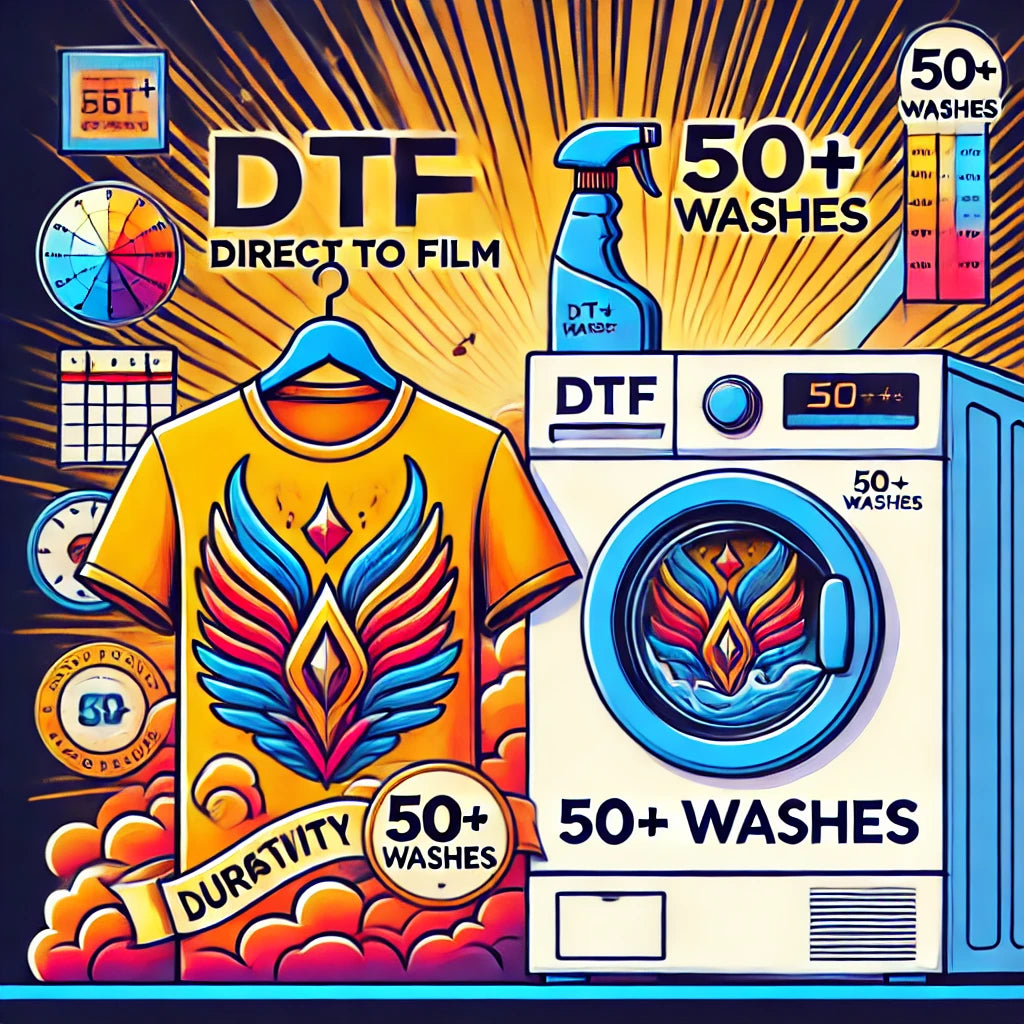
How Long Do DTF Transfers Last?
Share
DTF (Direct-to-Film) transfers are a popular method for printing custom designs on textiles, such as T-shirts, hoodies, and other apparel. The longevity of DTF transfers largely depends on several factors, including the quality of the materials, the care and maintenance of the printed item, and the conditions to which the item is exposed. Here's a breakdown of these factors:
-
Quality of Materials:
- Ink and Film Quality: The type and quality of ink and film used in the DTF transfer process are significant factors in determining how long the transfer will last. High-quality, fade-resistant, and durable inks, as well as robust films, can contribute to longer-lasting transfers.
-
Fabric Type:
- The type of fabric onto which the DTF transfer is applied matters. Natural fabrics like cotton tend to hold DTF transfers well, but blends or synthetic materials may have different results. The nature of the fabric can affect how well the ink adheres and how resistant it is to wear and washing.
-
Proper Application:
- The correct application of the DTF transfer is essential. The transfer process should be done accurately and with the right temperature and pressure to ensure a strong bond between the ink and the fabric. If not done correctly, the transfer may not last as long.
-
Washing and Care:
- How the printed item is cared for significantly impacts its longevity. Proper care includes following washing instructions, such as turning the garment inside out, using a gentle cycle, and avoiding harsh detergents or bleach. Frequent washing and drying at high temperatures can cause the transfer to deteriorate faster.
-
Handling:
- How the printed item is handled also matters. Rough handling, such as excessive stretching or frequent abrasion, can cause the transfer to wear out more quickly.
-
Exposure to Sunlight:
- Prolonged exposure to direct sunlight can fade the colors of DTF transfers over time. Storing the item in a dark or shaded place when not in use can help preserve the design.
-
Print Design and Density:
- The design itself plays a role. Designs with dense ink coverage or intricate details may be more susceptible to cracking or fading over time. Simpler, less intricate designs may last longer.
In general, well-made DTF transfers on high-quality fabrics, when properly applied and cared for, can last for a substantial amount of time. It's important to remember that no printing method, including DTF, is entirely permanent, and all printed designs will eventually show signs of wear and fade to some extent, especially with regular use and washing.
The specific duration of a DTF transfer's longevity can vary from several months to a few years, depending on the factors mentioned above. For items with a longer-lasting design, it's advisable to choose a reputable DTF printing service that uses high-quality materials and inks and to follow proper care instructions to maximize the life of your printed garments.
